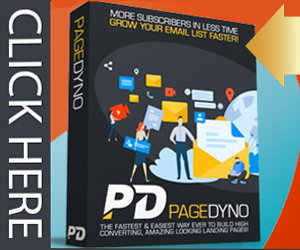Healthcare Blogging: Crafting SEO-Driven Content for Client Engagement
In today’s digital age, healthcare marketers (such as hospitals, clinics, doctors, and health and wellness stores) have a golden opportunity to engage clients effectively.
However, many are struggling with content marketing efficacy. Central to overcoming this challenge is crafting SEO-driven content for client engagement. Here’s a deep dive into nine actionable tips to help healthcare providers master this art.
No. 1 Understand Your Audience’s Needs
People with healthcare needs are constantly searching for reliable information to address their health concerns. As healthcare providers, your digital content should be the conduit that connects these interested potential clients to the knowledge and expertise you possess. However, crafting SEO-driven content for patient engagement requires a profound understanding of what concerns them the most.
But how do you gain such insights? The secret lies in proactive engagement. Instead of guessing what they might want to know, take the direct route—interact with them. Online forums, for instance, can be a goldmine of information, revealing the pressing questions that people grapple with. Patient testimonials can shed light on their healthcare journeys, highlighting their apprehensions and triumphs. Similarly, feedback forms can offer a structured way to understand their pain points or what they felt was lacking in their care.
By addressing the specific queries of potential clients, you provide valuable information and establish yourself as a reliable and caring institution. That, in turn, bolsters trust, encouraging patients to view your facility as a partner in their healthcare.
No. 2 Utilize Relevant Keywords
Search engines act as gatekeepers, directing users based on content relevancy. By identifying and integrating pertinent keywords, you bolster your content’s visibility.
Thus, you should conduct keyword research specific to your domain. Tools like Google’s Keyword Planner can offer insights into high-traffic, relevant phrases, for example.
Finding targeted SEO strategies, like relevant keywords, can be a game-changer, especially in niches like addiction treatment. For example, this optimization for rehab facilities ensures that those seeking specialized care find their way to a rehab center’s doorstep.
Therefore, if you are in this niche, you should start by understanding the patient’s journey for addiction treatment. Afterward, you must incorporate keywords they might use during their search. For instance, “family therapy in rehab” or “dual-diagnosis treatment centers” can be pivotal.
This is just an example. The same process applies to all niches in the health and wellness field (and to other niches, too, for that matter.)
No. 3 Incorporate Engaging Media
Since engagement transcends the written wor, integrating strategic visual elements into your content can magnify a message’s impact and streamline its absorption. That, in turn, will boost healthcare content marketing. Infographics, for instance, can transform intricate medical data into understandable, engaging visuals, turning a complex topic into a digestible piece of information.
Videos and animations also play a pivotal role. A simulated video of a doctor’s consultation offers patients a comforting preview of the real experience, diminishing uncertainties. Similarly, animations can break down complex procedures, providing a visual guide that demystifies the process and calms patient fears.
No. 4 Provide Accurate and Up-to-date Information
The healthcare landscape is constantly in flux, driven by ongoing research and the resulting emergence of new medical guidelines. Your content must remain a reliable and up-to-date source for patients in such a dynamic field.
To ensure its accuracy, you must keep abreast of the latest developments in your sub-specialty and in government regulations and validate the information you provide.
Building and maintaining relationships with medical experts (through their websites, if you don’t have personal relationships) is a prudent approach. Their expertise can serve as a quality check, ensuring that the content reflects the current best practices and the most recent medical knowledge.
Beyond this expert validation, instituting regular content audits is also essential. By routinely revisiting and updating your content, you ensure that every piece of information you provide remains relevant and accurate for your audience.
No. 5 Make Content Shareable
In the realm of digital marketing in healthcare, content sharing by readers is more than just expanding your visibility—it’s a powerful stamp of approval. When someone shares your content, it is a testimonial of its value and relevance for them. That fosters trust among new readers and enhances your SEO standings, thanks to the generation of valuable backlinks.
To capitalize on this, you must make sharing seamless for your audience. You facilitate easy dissemination by prominently placing social media sharing buttons on your content pages. (If you have a WordPress site, there are plugins that make this easy to do)
However, the key to eliciting shares by your readers lies in the content. Crafting pieces that balance informative and emotionally resonant content can compel readers to spread the word. For instance, a touching narrative detailing a patient’s journey to recovery can resonate deeply with readers, making them inclined to share such inspiring stories with their networks.
No. 6 Engage with Visitors through Comments
An engaged visitor is often a loyal one. By actively participating in comment sections if your site, you demonstrate commitment to their well-being. Thus, you should allocate resources to monitor comments daily. Address queries, acknowledge feedback, and provide auxiliary resources. If people inquire about a particular topic, guiding them to a dedicated FAQ page can be beneficial.
No. 7 Optimize for Mobile
The modern patient, in many cases, is mobile-first. An impeccable mobile experience ensures they can access your content anytime, anywhere. So, test your website’s mobile performance regularly. Ensure fast loading times, intuitive navigation, and clear call-to-action buttons. For a telemedicine platform, a “Consult Now” button should be prominently visible on mobile interfaces. Similar buttons in other niches can offer ways to draw a potential client into a closer relationship
No. 8 Craft Compelling Meta Descriptions
While not visible on your webpage, your site’s meta descriptions serve as first impressions. A well-crafted one can significantly influence click-through rates. Thus, you should keep meta descriptions under 160 characters, ensuring they encapsulate your content’s essence. For a post on mental well-being, a compelling meta might read: “Unlock secrets to mental resilience and holistic well-being with our expert insights.”
No. 9 Monitor and Adapt
SEO and client engagement aren’t static. Regular monitoring provides valuable insights to refine your strategy. Therefore, you should consider investing in analytics tools. They will help you observe which content types have the highest engagement and identify keywords driving traffic. For instance, consider creating a dedicated mindfulness series if mindfulness articles see high engagement.
Crafting SEO-Driven Content for Patient Engagement: A Strategic Imperative
Health and wellness providers of all kinds stand at a unique crossroads. Crafting SEO-driven content for patient engagement is more than a digital strategy; it’s about forging lasting bonds. By implementing these tips, you can ensure that your digital presence isn’t just felt but also respected. Remember, engagement is the precursor to trust in all niches, especially in healthcare, and trust is the bedrock of healing.
Image link: https://unsplash.com/photos/NFvdKIhxYlU
Comments are closed.





